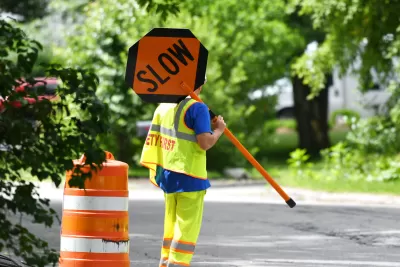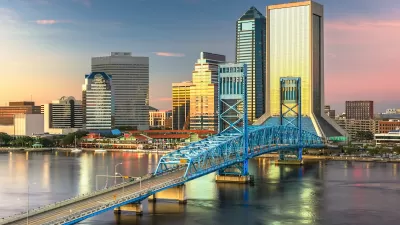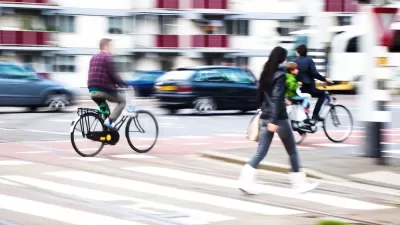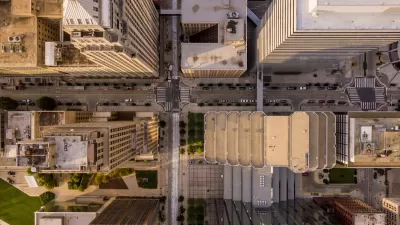The alarming rise in pedestrian deaths across the United States was predicted well before Covid-19 provided more opportunities for dangerous driving behaviors.

A new study from the AAA Foundation for Traffic Safety shows that traffic fatalities in the United States were projected to rise just as sharply even if the pandemic had not shut down roads and created conditions for faster driving, reports Kea Wilson in Streetsblog USA.
According to the study, “pre-pandemic models were already predicting a series of record years for pedestrian deaths, since they'd been trained on more than a decade of increasingly deadly data — and that prediction unfortunately, came true.”
The study finds that one likely explanation for the spike in traffic deaths during the pandemic is “a sharp increase in "aberrant driving behaviors" like speeding regardless of who else was on the road, alcohol-impaired driving, and driving without a license.”
However, principal researcher Brian Tefft cautioned that “we can't blame the roadway death crisis on a few bad-apple drivers cracking under pandemic-era stress — especially when systemic solutions exist to save lives even when motorists are driving like maniacs.” Tefft advises a safe system approach that focuses on design, infrastructure, and technology as ways to reduce risks to drivers and pedestrians. “Impaired driving prevention technology, speed limiters on cars, and speed-reducing road designs could all have curbed the bloodshed during the early days of COVID-19 — just like they could have saved lives before the pandemic and since.”
FULL STORY: Study: The Real Reasons Pedestrian Deaths Surged Along with COVID-19

Planetizen Federal Action Tracker
A weekly monitor of how Trump’s orders and actions are impacting planners and planning in America.

Congressman Proposes Bill to Rename DC Metro “Trump Train”
The Make Autorail Great Again Act would withhold federal funding to the system until the Washington Metropolitan Area Transit Authority (WMATA), rebrands as the Washington Metropolitan Authority for Greater Access (WMAGA).

The Simple Legislative Tool Transforming Vacant Downtowns
In California, Michigan and Georgia, an easy win is bringing dollars — and delight — back to city centers.

The States Losing Rural Delivery Rooms at an Alarming Pace
In some states, as few as 9% of rural hospitals still deliver babies. As a result, rising pre-term births, no adequate pre-term care and "harrowing" close calls are a growing reality.

The Small South Asian Republic Going all in on EVs
Thanks to one simple policy change less than five years ago, 65% of new cars in this Himalayan country are now electric.

DC Backpedals on Bike Lane Protection, Swaps Barriers for Paint
Citing aesthetic concerns, the city is removing the concrete barriers and flexposts that once separated Arizona Avenue cyclists from motor vehicles.
Urban Design for Planners 1: Software Tools
This six-course series explores essential urban design concepts using open source software and equips planners with the tools they need to participate fully in the urban design process.
Planning for Universal Design
Learn the tools for implementing Universal Design in planning regulations.
Smith Gee Studio
City of Charlotte
City of Camden Redevelopment Agency
City of Astoria
Transportation Research & Education Center (TREC) at Portland State University
US High Speed Rail Association
City of Camden Redevelopment Agency
Municipality of Princeton (NJ)





























